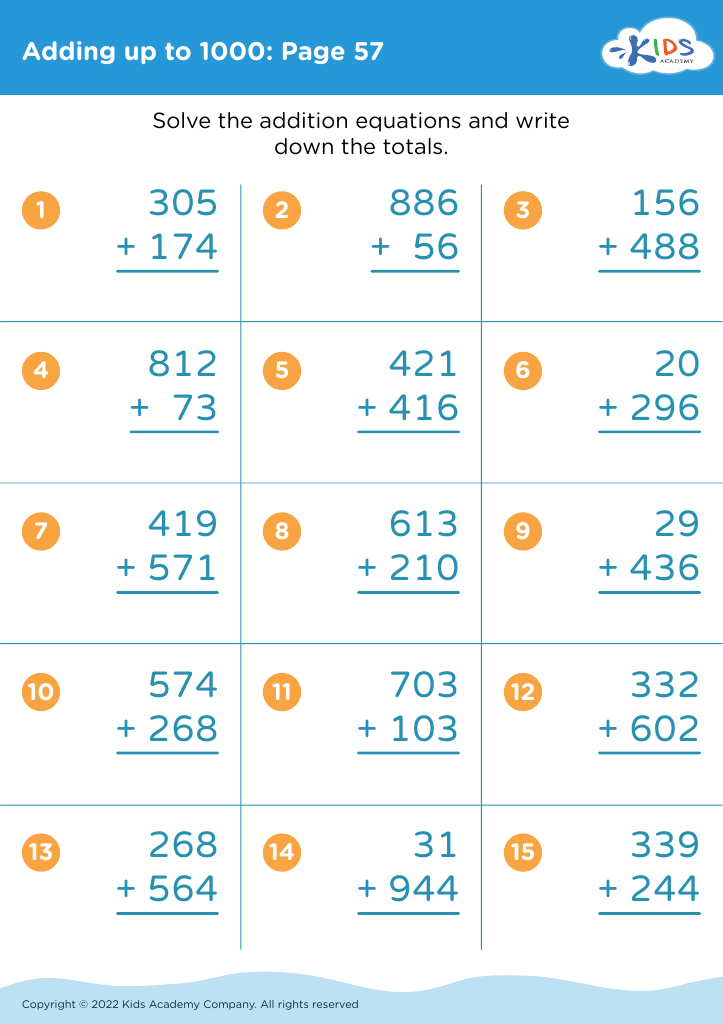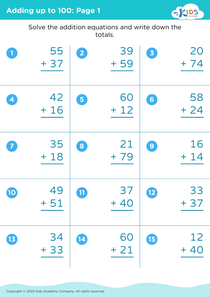Shape identification Adding up to 1000 Worksheets for Ages 7-9
6 filtered results
-
From - To
Shape Identification Adding up to 1000 Worksheets for Ages 7-9 offer a fun and educational way to strengthen foundational math skills for young learners. These teacher-created worksheets are meticulously designed to help children between the ages of 7 and 9 master the art of shape identification while simultaneously enhancing their addition skills with numbers up to 1000. Packed with engaging exercises and colorful illustrations, these worksheets not only foster critical thinking but also keep children motivated to learn. Ideal for both classroom and at-home practice, they provide an excellent resource for boosting mathematical confidence and competence.
Shape identification and understanding how to add up to 1000 are crucial skills for children aged 7-9, laying foundational capabilities for more advanced academics and everyday functional tasks. Parents and teachers should prioritize these skills for several reasons:
Firstly, shape identification sharpens spatial awareness and geometric understanding, fundamental for subjects like math, science, art, and even language arts. Grasping how various shapes interact and fit into broader patterns aids cognitive development, encouraging problem-solving and critical thinking.
Secondly, adding up to 1000 fortifies elementary arithmetic skills, essential for higher-level math including multiplication and division. Mastering this facilitates a smooth transition from elementary to intermediate math topics. It's a practical life skill too, helping in everyday situations like managing money, time, and measurements.
Moreover, nurturing these abilities bolsters confidence and paves the way for academic success. Early proficiency reduces frustration with more complex topics later, fostering a positive attitude towards learning. Socially, kids gain the ability to participate in group activities that involve categorization or basic arithmetic, thus improving communication and teamwork skills.
In summary, attention to shape identification and arithmetic to 1000 equips children with crucial analytical toolsets, nurturing both academic capabilities and day-to-day practical skills that are indispensable for future learning and personal growth.


















